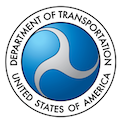
Federal testing is about to begin to determine how much interference GPS receivers can tolerate from their spectrum neighbors.
Federal testing is about to begin to determine how much interference GPS receivers can tolerate from their spectrum neighbors.
The Department of Transportation (DoT) announced last Wednesday (March 9, 2016) that, after a four-year wait, testing for the Adjacent Band Compatibility (ABC) Assessment would start in April. The research aims to chart interference masks, that is, power limits by frequency, for the bands near the GPS L1 signal. In the test’s next phase DoT will do the same for frequencies near the new GPS signals, such as L5 and frequencies being used by other satellite navigation constellations.
The tests will last about a week and take place in New Mexico at the U.S. Army Research Laboratory at the White Sands Missile Range.
The tests were proposed in February 2012 after the Federal Communications Commission (FCC) reversed its decision to grant LightSquared, Inc., now named Ligado, contingent permission to repurpose satellite spectrum for a ground-based broadband network. Tests ultimately showed the proposed network would overload most types of GPS receivers and LightSquared slipped into bankruptcy. The ABC Assessment aims to prevent such losses in the future by determining the practical limits for users of frequencies near GPS.
The tests will cover a 200-megahertz band — that is ±100 megahertz on either side of the GPS L1 frequency centered at 1575.42 MHz. The interference tolerance mask will be at the point where the interference test signal power level causes a one-decibel degradation in the signal to noise ratio (C/N0).
Both GPS and GNSS equipment will be tested, according to the final ABC test plan released March 9 — the same day that the test schedule was announced in the Federal Register. Those receivers, the plan says, will come from seven categories — aviation (noncertified), cellular, general location/navigation, and precision, timing, network-, and space-based receivers.
"DoT seeks to include a broad range of devices used in rail, aviation, motor vehicle, maritime, and space transportation safety systems, among a number of other applications of GPS/GNSS," the agency wrote.
Industry Role
The receivers being used in the assessment are being provided by government agencies, according to the announcement. However, DoT is hoping commercial GPS receiver manufacturers will choose to support the study by supplying information and contributing equipment for study.
"To maximize diversity in the devices tested and breadth of relevant data collected for analysis in the Study," DoT wrote, "the Department requests voluntary participation in this Study by any interested GPS/GNSS device manufacturers or other parties whose products incorporate GPS/GNSS devices. Such participation could involve provision of GPS/GNSS receivers to DOT for use in testing, provision of data on receiver design to facilitate data collection pursuant to the test plan, and/or on-site commitment and support from manufacturers and other entities providing GPS/GNSS receivers for testing."
The agency is offering the companies a non-disclosure agreement (NDA) to protect their important information. Firms willing to assist have until March 18 to inform DOT. The contact person is Stephen Mackey at <stephen.mackey@dot.gov> or 1-617-494-2753.
At least one receiver manufacturer is already stepping up.
"NovAtel has been participating in the GPS ABC activities leading up to the final test plan," said Sandy Kennedy, the company’s director and chief engineer in charge of receiver core cards, in an emailed response. "We are working to finalize our NDA with the DoT. Pending that, we plan to participate in the test campaign."
Although other firms queried by Inside GNSS did not respond by press time, Deere & Company noted in a March 7 FCC filing its "ongoing support for and participation in Department of Transportation-sponsored testing and analysis examining how spectrum in bands adjacent to the Global Navigation Satellite System (“GNSS”) frequencies could be used without causing interference to GNSS. "
Wireless Pushback
The FCC has been hearing quite a bit about DoT’s testing approach. Ligado has rigorously opposed the ABC Assessment from the beginning and takes particular umbrage at the one-decibel standard. The firm hired telecommunications firm Roberson and Associates to do separate GPS receiver tests using changes in receiver position error as the metric.
Ashley Durmer, Ligado’s senior vice president-government relations and corporate communications suggested the ABC Assessment did not take into account the Roberson testing or "the agreements made by major GPS manufacturers who supply many of the devices used by federal agencies and consumers today."
"Specifically," she said in an emailed response, "the plan appears to include testing of spectrum which no one proposes using for terrestrial service and will assess power levels that far exceed the operating parameters we’ve agreed to with the GPS parties and submitted to the FCC for approval. We continue to believe that our settlements with the GPS industry and our commitment to meet aviation safety guidelines provide a framework for compatibility, and we will continue to work collaboratively with government and industry stakeholders as the approval process advances.”
Deere, however, underscored in its letter its support for "a testing and analysis process based on a 1 dB harmful interference metric, a standard that has a long and well-established history in both international and domestic regulatory proceedings as the appropriate interference protection criteria for GPS receivers."
"Use of a defined change in the noise floor (1 dB)," wrote attorney Catherine Wang, "provides a readily identifiable and predictable metric that all interested parties can take into account now and in the future."
Wang also made clear that Deere "does not support other approaches that would require testing and analysis of many complicated use cases."
Interestingly, Durmer framed her response to a question about the Deere letter squarely in the context of the legal settlements.
"Deere agreed not to object to deployment of a Ligado network under the agreed upon operating parameters," she said in a March 8 story by TR Daily.
"There is no reason," she continued, "for the DoT to measure impact of 1 dB as the Roberson study has proved that GPS signals vary by 1 dB second to second even when there is no terrestrial broadband at all in the adjacent bands. As [FCC] Chairman [Tom] Wheeler recently encouraged, terrestrial and satellite industries should work together for the common good, and we believe the collaborative agreements with Deere and other key members of the GPS community provide a framework that brings the industries together. It would be unfortunate for these critical sectors if DoT’s testing adversely impacts this kind of significant progress.”
GPS signal expert Logan Scott called the assertion that C/N0 varied too much to be useful "specious."
"Throwing out the 1dB threshold criteria based on the fact that in real life the signal-to-noise ratios vary because satellites move around and antenna gains change is not a valid argument," Scott told Inside GNSS in an earlier interview.
Scott applauded DoT for updating its final plan to use an LTE (Long-Term Evolution) signal, the sort proposed by Ligado, instead of a more generic signal for its tests.
"If you’re going to place a multibillion-dollar system at risk to out-of-band interference," he said, "you really want to understand that against the exact type of interference you’ll be dealing with."





